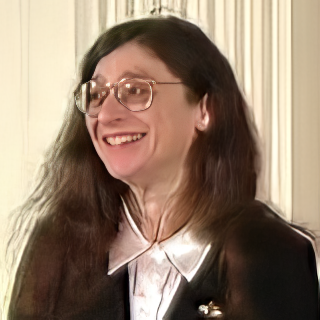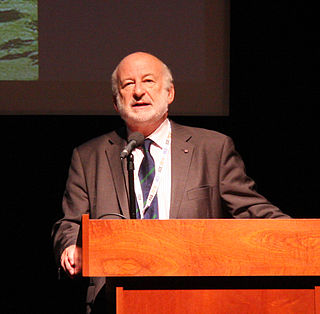Related Research Articles

Entomology is the scientific study of insects, a branch of zoology. In the past the term insect was less specific, and historically the definition of entomology would also include the study of animals in other arthropod groups, such as arachnids, myriapods, and crustaceans. This wider meaning may still be encountered in informal use.

Berthold Karl HölldoblerBVO is a German zoologist, sociobiologist and evolutionary biologist who studies evolution and social organization in ants. He is the author of several books, including The Ants, for which he and his co-author, E. O. Wilson, received the Pulitzer Prize for non-fiction writing in 1991.

Myrmecology is a branch of entomology focusing on the scientific study of ants. Some early myrmecologists considered ant society as the ideal form of society and sought to find solutions to human problems by studying them. Ants continue to be a model of choice for the study of questions on the evolution of social systems because of their complex and varied forms of eusociality. Their diversity and prominence in ecosystems also has made them important components in the study of biodiversity and conservation. Recently, ant colonies are also studied and modeled for their relevance in machine learning, complex interactive networks, stochasticity of encounter and interaction networks, parallel computing, and other computing fields.
Mahadeva Subramania Mani aka Dr MS Mani was an Indian entomologist especially famous for his studies on high altitude entomology.

Deborah Blum is an American science journalist and the director of the Knight Science Journalism program at the Massachusetts Institute of Technology. She is the author of several books, including The Poisoner's Handbook (2010) and The Poison Squad (2018), and has been a columnist for The New York Times and a blogger, via her blog titled Elemental, for Wired.
Thomas Eisner was a German-American entomologist and ecologist, known as the "father of chemical ecology." He was a Jacob Gould Schurman Professor of Chemical Ecology at Cornell University, and Director of the Cornell Institute for Research in Chemical Ecology (CIRCE). He was a world authority on animal behavior, ecology, and evolution, and, together with his Cornell colleague Jerrold Meinwald, was one of the pioneers of chemical ecology, the discipline dealing with the chemical interactions of organisms. He was author or co-author of some 400 scientific articles and seven books.

An allomone is a type of semiochemical produced and released by an individual of one species that affects the behaviour of a member of another species to the benefit of the originator but not the receiver. Production of allomones is a common form of defense against predators, particularly by plant species against insect herbivores. In addition to defense, allomones are also used by organisms to obtain their prey or to hinder any surrounding competitors.

May Roberta Berenbaum is an American entomologist whose research focuses on the chemical interactions between herbivorous insects and their host plants, and the implications of these interactions on the organization of natural communities and the evolution of species. She is particularly interested in nectar, plant phytochemicals, honey and bees, and her research has important implications for beekeeping.

Stephen Taber III. was an American apiologist, noted authority and author in the field of artificial insemination of queen bees for the purpose of developing disease resistant and gentle bee colonies.
Elwood Curtin Zimmerman was an American entomologist best known for his two multivolume series: Insects of Hawaii published by the University of Hawaiʻi Press and Australian Weevils published by Australia's CSIRO.

Philip Steven Corbet was a British entomologist whose work focused largely on aquatic insects and dragonflies. He co-authored and authored several books on the subject, which established him as a world expert on the order Odonata. He is also noted for his interest in biological controls as a substitute for synthetic pesticides in agriculture.
Charles Howard Curran was a Canadian entomologist who specialized in Diptera. Curran's main taxonomic interests were in brachyceran flies, particularly the flower flies Syrphidae, in which he described 723 species. He described 2,648 species over his career. He was active in the study of insect control. His 1934 work The Families and Genera of North American Diptera was an important and comprehensive work on the topic of North American fly genera.

John Anthony Pickett CBE DSC FRS is a British chemist who is noted for his work on insect pheromones. Pickett is Professor of Biological Chemistry in the School of Chemistry at Cardiff University. He previously served as the Michael Elliott Distinguished Research Fellow at Rothamsted Research.
Fergus J. O'Rourke (1923–2010) was an Irish scientist whose publications included contributions to myrmecology and medical entomology. Educated at Belvedere College, and subsequently at University College Dublin, he graduated from University College Dublin both as a medical doctor and with a Masters in Science. He subsequently earned a PhD in Zoology. O'Rourke's 1948's survey of Irish ants built on the earlier work of Stelfox and provided an authoritative description of Irish ants. O'Rourke (1956) provided an early consideration of the importance of ants as disease vectors. He was appointed Professor of Zoology at University College Cork and was elected a Member of the Royal Irish Academy and Fellow of the Royal Entomological Society of London.

James Halliday McDunnough was a Canadian linguist, musician, and entomologist best known for his work with North American Lepidoptera, but who also made important contributions about North American Ephemeroptera.
Insects have a wide variety of predators, including birds, reptiles, amphibians, mammals, carnivorous plants, and other arthropods. The great majority (80–99.99%) of individuals born do not survive to reproductive age, with perhaps 50% of this mortality rate attributed to predation. In order to deal with this ongoing escapist battle, insects have evolved a wide range of defense mechanisms. The only restraint on these adaptations is that their cost, in terms of time and energy, does not exceed the benefit that they provide to the organism. The further that a feature tips the balance towards beneficial, the more likely that selection will act upon the trait, passing it down to further generations. The opposite also holds true; defenses that are too costly will have a little chance of being passed down. Examples of defenses that have withstood the test of time include hiding, escape by flight or running, and firmly holding ground to fight as well as producing chemicals and social structures that help prevent predation.

Jerrold Meinwald was an American chemist known for his work on chemical ecology, a field he co-founded with his colleague and friend Thomas Eisner. He was a Goldwin Smith Professor Emeritus of Chemistry at Cornell University. He was author or co-author of well over 400 scientific articles. His interest in chemistry was sparked by fireworks done with his friend Michael Cava when they were still in junior high school. Meinwald was also a music aficionado and studied flute with Marcel Moyse – the world's greatest flutist of his time.

Ross Taylor Bell was an American entomologist with particular interest in the invertebrate natural history of Vermont, United States, and carabid beetles. Together with his wife, Joyce Bell, his work at the University of Vermont was largely taxonomic, where they described more than 75% of the rhysodine species known to science. Ross also wrote a number of seminal papers in his chosen field.
Taracad Narayanan Ananthakrishnan was an Indian entomologist and insect ecologist. His areas of specialization was in the study of gall insects (Cecidology) and chemical ecology. He did extensive study of Indian thrips (Thysanoptera) and made immense contributions to this field of science.
William Sherburne Romoser was an American entomologist. He was an emeritus professor of Arbovirology and Medical Entomology at the Ohio University.
References
- 1 2 Schmidt, Justin; Aldrich, Jeff; Crewe, Robin; Duffield, Rick; Hefetz, Abraham; Jones, Tappey; Hinkle, Nancy (September 2015). "Murray S. Blum". American Entomologist . 61 (3): 195–196. doi: 10.1093/ae/tmv051 .
- 1 2 "Murray Sheldon Blum Obituary (1929 - 2015) Athens Banner-Herald". Legacy.com. Retrieved 2022-03-30.
- ↑ Blum, Murray S.; Stephen Taber III (1960). "Preservation of Honey Bee Semen". Science. 131 (3415): 1734–1735. Bibcode:1960Sci...131.1734T. doi:10.1126/science.131.3415.1734. PMID 13836523. S2CID 42289021.
- ↑ Golden, Frederic (13 December 1994). "The Right Chemistry : Authors: Deborah Blum parlayed her science background and reporting skills into a book that investigates both sides of the controversy over the use of primates in biomedical research". Los Angeles Times.